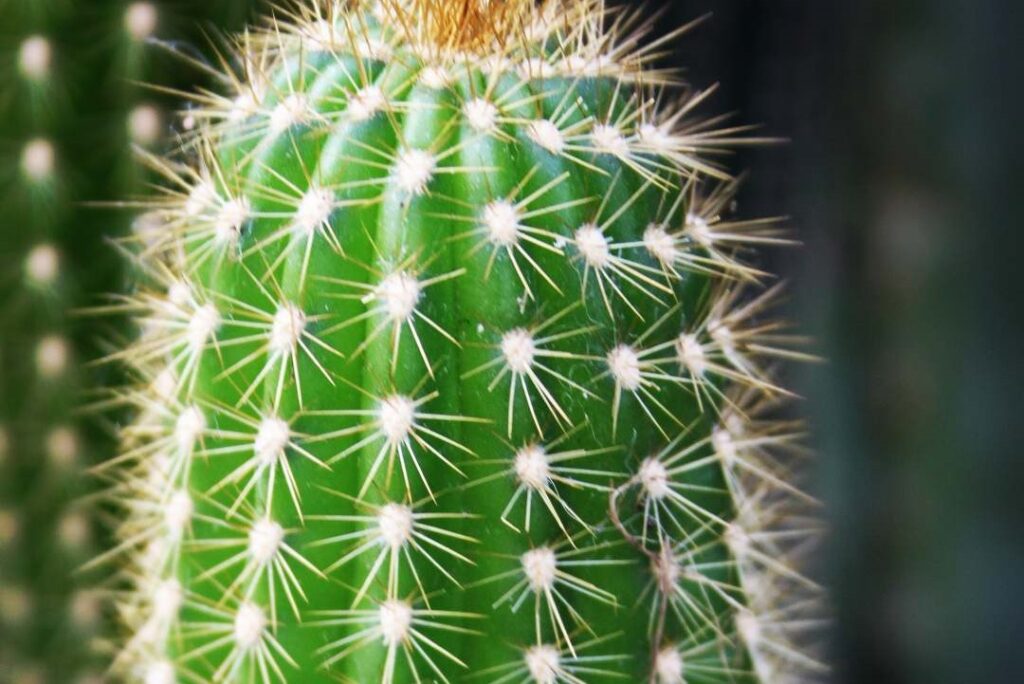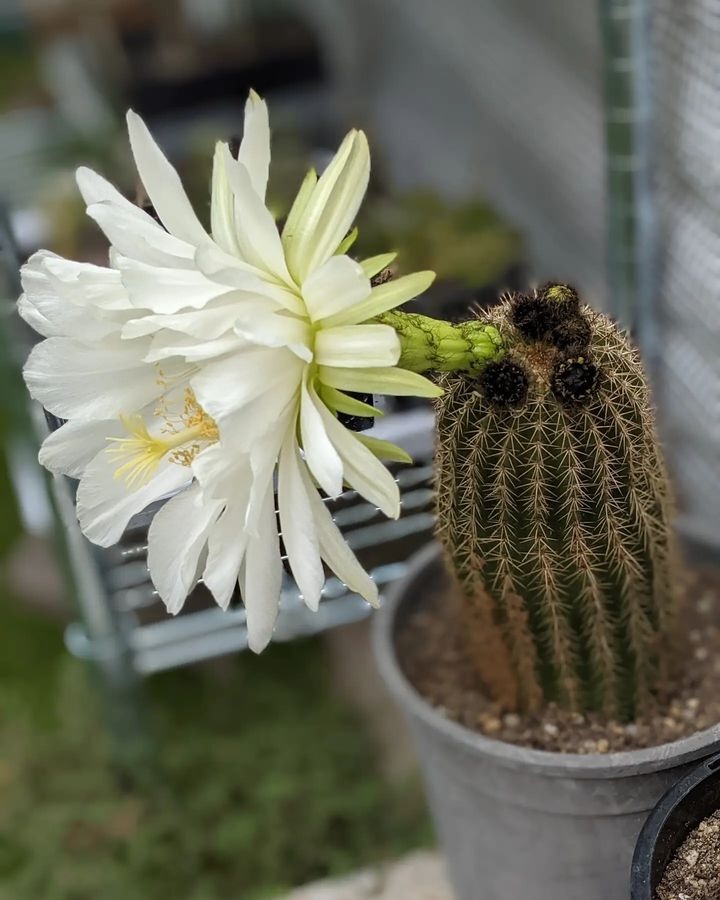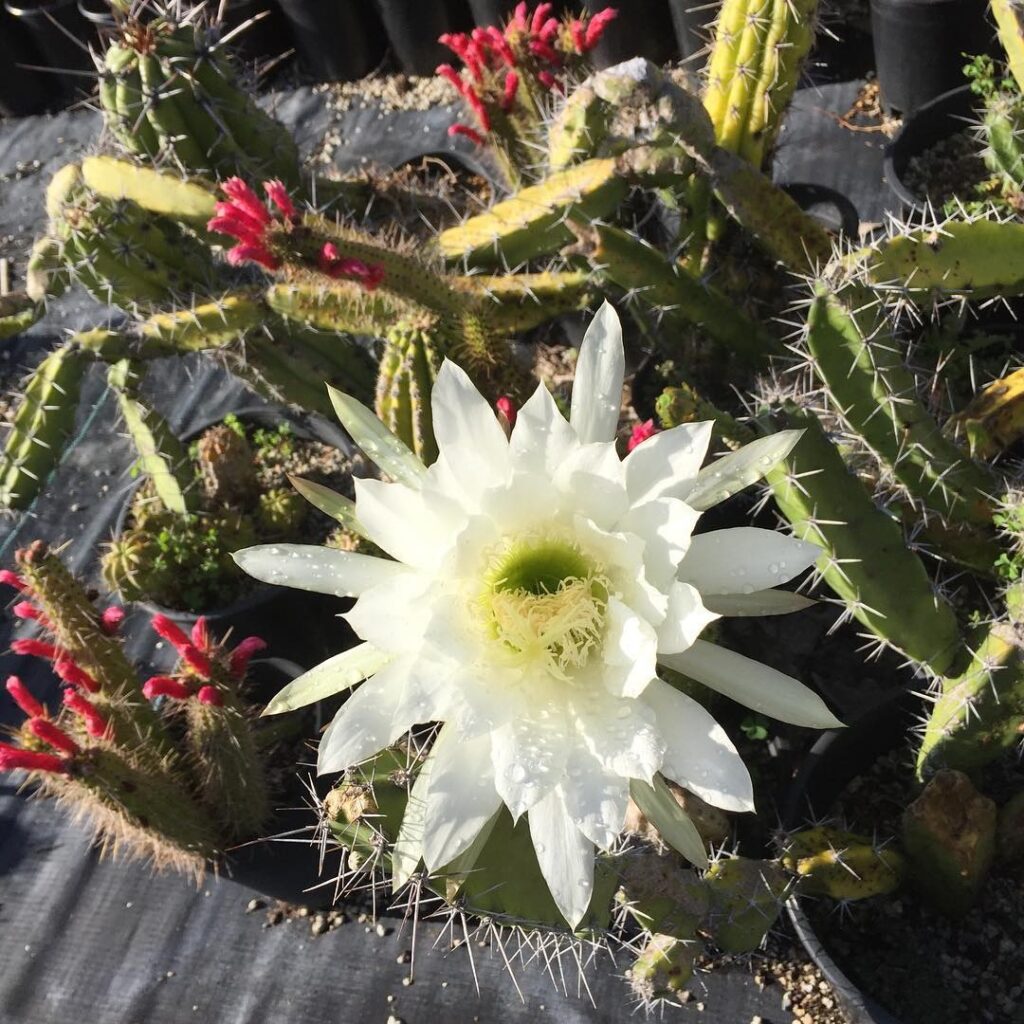Trichocereus shaferi: The Peruvian Cactus with a Hooked Central Spine
Hey cactus fans! Today we’re going to explore one seriously eye-catching plant – the Trichocereus shaferi. This spiky Peruvian native might just become your new favorite with its unique hooked central spine and stunning flowers. Keep reading to find out what makes this cactus such a stunner!

Contents
About Trichocereus shaferi
Let’s start by getting to know this cool cactus a bit better. The Trichocereus shaferi has a globular to elongated stem that can reach up to 5 feet tall when fully grown! Its grayish-green to brownish stems develop 10-14 straight ribs covered in clusters of brownish spines.
But the real showstopper is that single upward-curving central spine. On mature plants, this baby can grow over 4 inches long with a dramatic hooked shape. Kind of like nature’s fishing rod! The areoles (spine clusters) are tightly packed together too, adding even more texture.
In spring and summer, the Trichocereus shaferi produces huge trumpet-shaped white or pale pink flowers up to 6 inches long. The floral tubes are dark brown with little hairy tufts. As the bloom opens, you’ll see layers of pointed petals in shades from purplish to bright white. So vibrant!
With its wild spines and bold blooms, this cactus definitely demands attention in the garden. Now let’s talk about keeping it healthy and happy.

Related Post:
40 Types Of Trichocereus Species [With Pictures]
How to Care for Trichocereus shaferi
Sunlight Needs
Outside, the Trichocereus shaferi does best in bright but filtered sunlight or afternoon shade. It tends to develop a bronze color in strong direct light, which encourages heavier spine production and flowering. Inside, it needs bright light from a sunroom or greenhouse, supplemented with a grow light providing 14-16 hours of lighting per day. Grow lights allow you to provide the intense bright conditions this cactus needs when natural sunlight is insufficient.
When to Water
During the spring and summer growing period, give your Trichocereus shaferi a good drink whenever the soil is completely dry. Allow the soil to fully soak through and then let it dry out before watering again. In winter, cut back watering to just once every 6-8 weeks to let the cactus rest.
Perfect Soil
The Trichocereus shaferi likes a very porous, well-draining standard cactus potting mix. A soil that stays too wet can cause excessive elongation and stretching of the plant. Use a store-bought cactus/succulent soil mix or make your own by combining potting soil, coarse sand or grit, and perlite or pumice. Ensure the pot has ample drainage holes as well to prevent soggy soil conditions.
Fertilizer Boost
During the summer growing season, feed your Trichocereus shaferi with a fertilizer high in potassium and phosphorus, the nutrients that promote sturdy growth, thick spines and flowering for cactus plants. An occasional application of a balanced liquid cactus fertilizer diluted to half-strength is ideal. Avoid over-fertilizing, which can lead to lush green growth at the expense of flowers and spines.

Temperature and Humidity
Trichocereus shaferi cacti are pretty tough and can tolerate temps from 50°F up to the 100s! However, they grow best with average household temperatures around 70°F. Humidity levels don’t matter much either.
Pests and Problems
The most common pests are mealybugs, spider mites and root aphids. Fungal diseases that cause rot are also an issue if the soil stays too wet. Black spots on the stems are unsightly but harmless. Inspect regularly and treat pests/disease promptly.
Pruning Pointers
You may need to trim back overgrown or damaged stems to keep your cactus compact and tidy. Always use clean, sharp shears and allow pruning wounds to callous over before re-planting cuttings.
Potting and Repotting
Young plants should be potted up into a larger container each year until they reach a mature size. Older cacti will only need repotting every 2-4 years in early spring. Use a pot with drainage holes and don’t bury the stem too deeply.
Trichocereus shaferi Propagation
Seeds are the most common propagation method, though offsets from the base can also be removed and rooted. For seeds:
- Use a well-draining seed starter mix and sow seeds just below the surface
- Maintain temperatures around 75-80°F until germination in 7-14 days
- After seedlings sprout, remove humidity dome and provide very bright light
- Be sure to use a sterile seeding mix to prevent fungal issues
- When a few inches tall, transplant into individual pots with cactus potting mix
With patience, care and the right growing conditions, these decorative globular cacti can make eye-catching, low-maintenance additions to your cactus collection.
